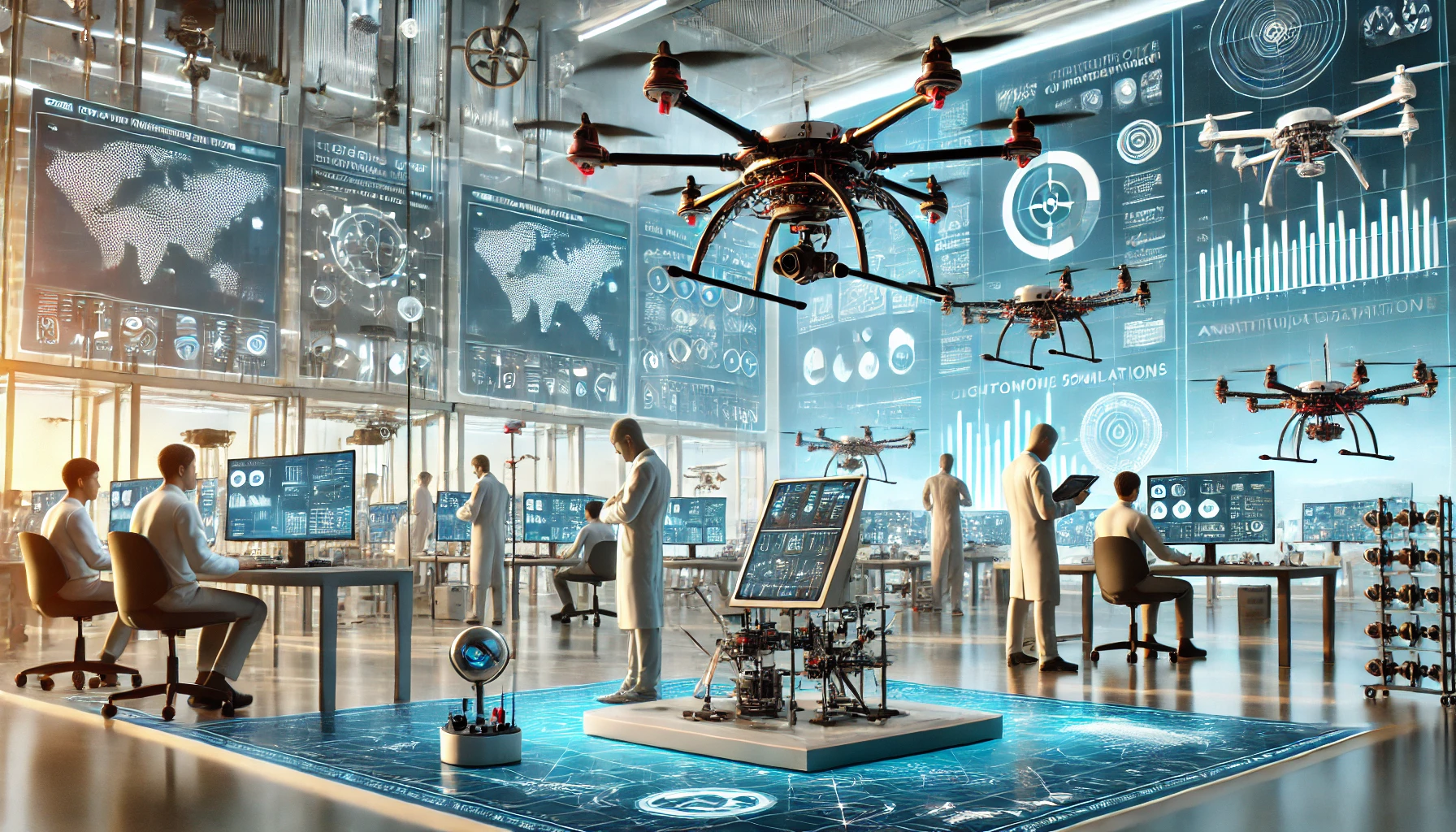Drones have evolved far beyond mere gadgets or hobbies. Today, they serve as vital tools across a wide range of industries, including agriculture, logistics, filmmaking, defense, and environmental conservation. Their ability to perform tasks that are otherwise too difficult, dangerous, or costly for humans has made them indispensable. But what truly drives their ongoing evolution is the innovative design technologies behind them.
Drone design technologies are advancing rapidly, making these aerial machines smarter, faster, more autonomous, and highly adaptable to various tasks. In this blog post, we’ll explore the latest advancements in drone design and how these innovations are shaping the future of autonomous aerial solutions.
The Evolution of Drone Design Technologies
Drones have been around for decades, but their earlier designs were often bulky, expensive, and limited in functionality. Initially designed for military applications, drones have since evolved into sleek, efficient, and versatile tools, thanks to breakthroughs in materials science, robotics, aerodynamics, and sensor technology.
The key to modern drone design lies in maximizing efficiency. Whether it’s improving battery life, refining flight control systems, or incorporating advanced sensors, every component must work seamlessly to deliver optimal performance. Below, we’ll dive into some of the most important technological advancements that are revolutionizing drone design.
1. Advanced Materials and Lightweight Design
One of the most important aspects of drone design is weight. The lighter a drone, the longer it can stay airborne, the higher it can fly, and the less energy it consumes. Innovations in materials science have allowed engineers to create lightweight yet durable materials, drastically reducing the overall weight of drones.
Carbon fiber, for example, is widely used in drone construction because of its strength and low weight. Other advanced materials, such as lightweight metals and high-performance polymers, are also becoming more common in drone design. Lighter drones can fly for longer durations and perform more complex tasks, from aerial surveillance to package delivery.
2. Improved Aerodynamics
Aerodynamic efficiency is critical to enhancing drone performance. A more aerodynamic design reduces air resistance, allowing the drone to fly faster, consume less energy, and remain more stable, even in challenging conditions. Designers are continuously refining the shape of drones to reduce drag and optimize flight performance.
Using advanced tools like computer simulations, wind tunnel testing, and computational fluid dynamics (CFD), engineers can predict how different designs will behave in real-world flight scenarios. This leads to smoother flights, improved endurance, and better overall performance, allowing drones to carry out tasks more efficiently.
3. Autonomous Navigation and AI Integration
One of the most exciting advancements in drone technology is the integration of artificial intelligence (AI) and autonomous navigation systems. While drones have traditionally been operated by remote control, AI is pushing them toward greater autonomy. Autonomous drones can now navigate complex environments, avoid obstacles, and complete missions with minimal human intervention.
These drones rely on a combination of GPS, sensors, and AI algorithms to plan flight paths, make real-time decisions, and adapt to changing conditions. For example, AI-powered drones in agriculture can autonomously monitor crops, water usage, and soil health over large areas, saving farmers time and labor. In logistics, companies like Amazon are testing autonomous drones for faster and more efficient deliveries.
4. High-Performance Sensors and Imaging Technology
Modern drones are equipped with an array of advanced sensors and imaging technologies that allow them to gather detailed data from the sky. From high-resolution cameras to infrared and thermal sensors, drones can capture a wide range of information in real-time.
In industries like construction, drones equipped with LiDAR (Light Detection and Ranging) sensors are used to create accurate 3D maps of construction sites. These maps help project managers track progress, identify potential issues, and make better decisions. In environmental monitoring, drones use multispectral cameras to track wildlife, monitor forest health, and detect illegal activities like poaching or logging.
As these sensors become more advanced, drones will continue to provide industries with highly accurate and actionable data, helping them make smarter decisions faster.
5. Battery Life and Power Efficiency
One of the biggest challenges in drone design is power efficiency. Most drones rely on batteries for power, and flight times are often limited to 20–30 minutes per charge. However, advances in battery technology and alternative power sources are pushing the boundaries of what’s possible.
Innovations such as solar-powered drones, fuel cells, and hybrid propulsion systems are extending flight times and expanding the potential applications for drones. For example, solar-powered drones can stay in the air for days or even weeks, making them ideal for long-term monitoring in remote areas.
Battery technology is also improving, with newer options like lithium-sulfur and solid-state batteries offering higher energy densities and longer flight times. As these technologies continue to develop, drones will become even more powerful and efficient, unlocking new possibilities for extended missions and greater autonomy.
The Future of Drone Design
The future of drone design looks incredibly promising, with advancements in lightweight materials, improved aerodynamics, AI-driven autonomy, and high-performance sensors propelling the industry forward. In the coming years, we can expect to see drones playing an even bigger role in industries like healthcare, where they could be used to deliver medical supplies to remote areas, or in disaster response, where autonomous drones can assess damage and deliver aid quickly and safely.
Ultimately, the future of drones lies in their ability to solve real-world problems by combining cutting-edge design and advanced technology. As these flying machines continue to evolve, they will play an increasingly vital role across various industries, offering innovative solutions to challenges we haven’t even imagined yet.
By embracing these new design technologies, drones will continue to redefine how we work, communicate, and interact with the world around us. Whether it’s through smarter autonomous navigation, improved power efficiency, or high-performance imaging capabilities, drones are shaping the future of industries across the globe.

